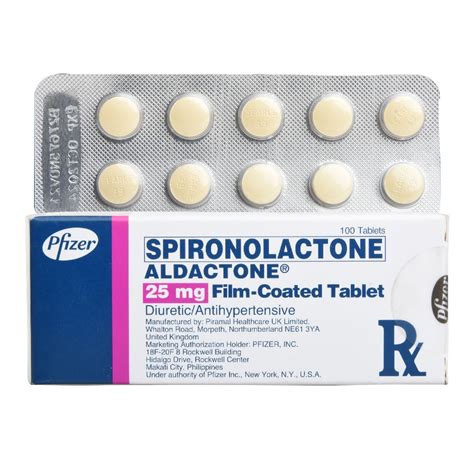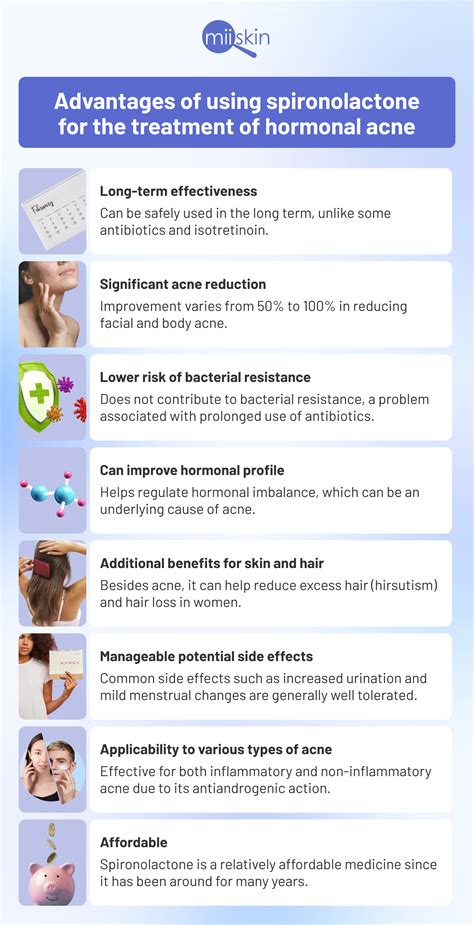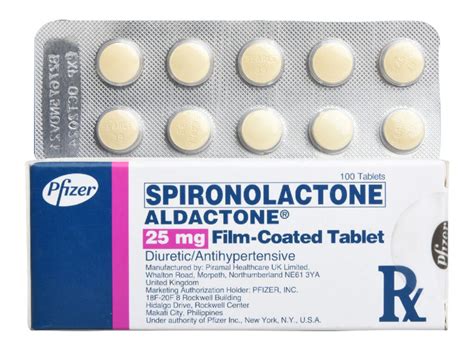Spironolactone, a medication known for its diuretic properties, has been widely used in the medical field for various purposes. The 25 mg dosage is a common strength for this medication, and its uses are diverse and beneficial for patients suffering from certain conditions. In this article, we will delve into the world of spironolactone, exploring its mechanisms, benefits, and applications, particularly focusing on the 25 mg dosage.
The importance of understanding spironolactone's uses cannot be overstated, as it is a medication that affects the body's fluid balance and has significant implications for heart health, blood pressure, and hormonal balance. By grasping the fundamentals of how spironolactone works and its various applications, patients and healthcare providers can make informed decisions about its use, ensuring safe and effective treatment.
Spironolactone's role in managing conditions like hypertension, heart failure, and edema is well-documented. Its ability to act as a potassium-sparing diuretic sets it apart from other diuretics, making it a valuable asset in treating patients who require careful management of electrolyte levels. Furthermore, its application in treating conditions related to hormonal imbalances, such as acne, hirsutism, and polycystic ovary syndrome (PCOS), highlights its versatility as a therapeutic agent.
Introduction to Spironolactone
Spironolactone belongs to a class of medications known as aldosterone antagonists. It works by blocking the action of aldosterone, a hormone produced by the adrenal glands that controls the balance of fluids and electrolytes in the body. By inhibiting aldosterone, spironolactone increases the excretion of water and sodium in the urine, reducing fluid retention and lowering blood pressure. This mechanism of action makes it an effective treatment for conditions characterized by fluid overload or high blood pressure.
Medical Uses of Spironolactone 25 Mg

The 25 mg dosage of spironolactone is commonly prescribed for several medical conditions, including:
- **Hypertension:** Spironolactone is used to treat high blood pressure, especially in patients who have not responded well to other treatments. Its ability to lower blood pressure helps reduce the risk of heart disease, stroke, and kidney damage.
- **Heart Failure:** In patients with heart failure, spironolactone can help reduce mortality and morbidity by decreasing the strain on the heart and improving symptoms such as edema and shortness of breath.
- **Edema:** For patients suffering from edema associated with congestive heart failure, cirrhosis of the liver, or a kidney disorder called nephrotic syndrome, spironolactone can help reduce swelling by promoting the excretion of excess fluid.
- **Hirsutism and Acne:** In women, spironolactone can be used off-label to treat hirsutism (excessive hair growth) and acne, conditions often associated with polycystic ovary syndrome (PCOS). It works by blocking the effects of androgens (male hormones), which can contribute to these symptoms.
Benefits and Side Effects
The benefits of spironolactone are numerous, including its effectiveness in managing fluid balance and blood pressure, as well as its role in treating hormonal imbalances. However, like all medications, it can also have side effects. Common side effects include dizziness, headache, nausea, and vomiting. More serious side effects can include hyperkalemia (high potassium levels), which requires careful monitoring of potassium levels during treatment.
Working Mechanism of Spironolactone
Spironolactone's mechanism of action is centered around its ability to antagonize the effects of aldosterone. By binding to mineralocorticoid receptors in the kidneys, spironolactone prevents aldosterone from exerting its usual effects, which include promoting the reabsorption of sodium and water and the excretion of potassium. This leads to an increase in sodium and water excretion and a decrease in potassium excretion, making spironolactone a potassium-sparing diuretic.
Steps for Taking Spironolactone 25 Mg
To ensure the safe and effective use of spironolactone 25 mg, patients should follow these steps:
- Take the medication exactly as prescribed by your healthcare provider.
- Monitor your blood pressure and potassium levels regularly.
- Report any signs of hyperkalemia, such as muscle weakness, palpitations, or breathing difficulties, to your healthcare provider immediately.
- Be aware of potential interactions with other medications, such as ACE inhibitors, ARBs, and potassium supplements, which can increase the risk of hyperkalemia.
Practical Examples and Statistical Data
Studies have shown that spironolactone can significantly reduce the risk of death from heart failure and decrease the rate of hospitalization due to worsening heart failure. For instance, the RALES study (Randomized Aldactone Evaluation Study) demonstrated a 30% reduction in the risk of death from cardiac causes in patients with severe heart failure treated with spironolactone compared to placebo. These findings underscore the importance of spironolactone in the management of heart failure and highlight its potential to improve patient outcomes.
Conclusion and Future Perspectives
As research continues to uncover the full potential of spironolactone, its role in treating various medical conditions is likely to expand. With its unique mechanism of action and proven benefits, spironolactone remains a valuable treatment option for patients with hypertension, heart failure, and hormonal imbalances. Healthcare providers and patients alike must stay informed about the latest developments and guidelines regarding the use of spironolactone to ensure its safe and effective application.
We invite readers to share their experiences or ask questions about spironolactone in the comments section below. Your feedback and inquiries can help create a more comprehensive understanding of this medication and its uses. Additionally, if you found this article informative, please consider sharing it with others who might benefit from this information.
What is the primary use of spironolactone 25 mg?
+
Spironolactone 25 mg is primarily used to treat conditions such as hypertension, heart failure, and edema, as well as hormonal imbalances like hirsutism and acne in women.
How does spironolactone work?
+
Spironolactone works by blocking the action of aldosterone, leading to increased excretion of sodium and water and decreased excretion of potassium, thus acting as a potassium-sparing diuretic.
What are the common side effects of spironolactone?
+
Common side effects include dizziness, headache, nausea, and vomiting. More serious side effects can include hyperkalemia, which requires careful monitoring of potassium levels.







